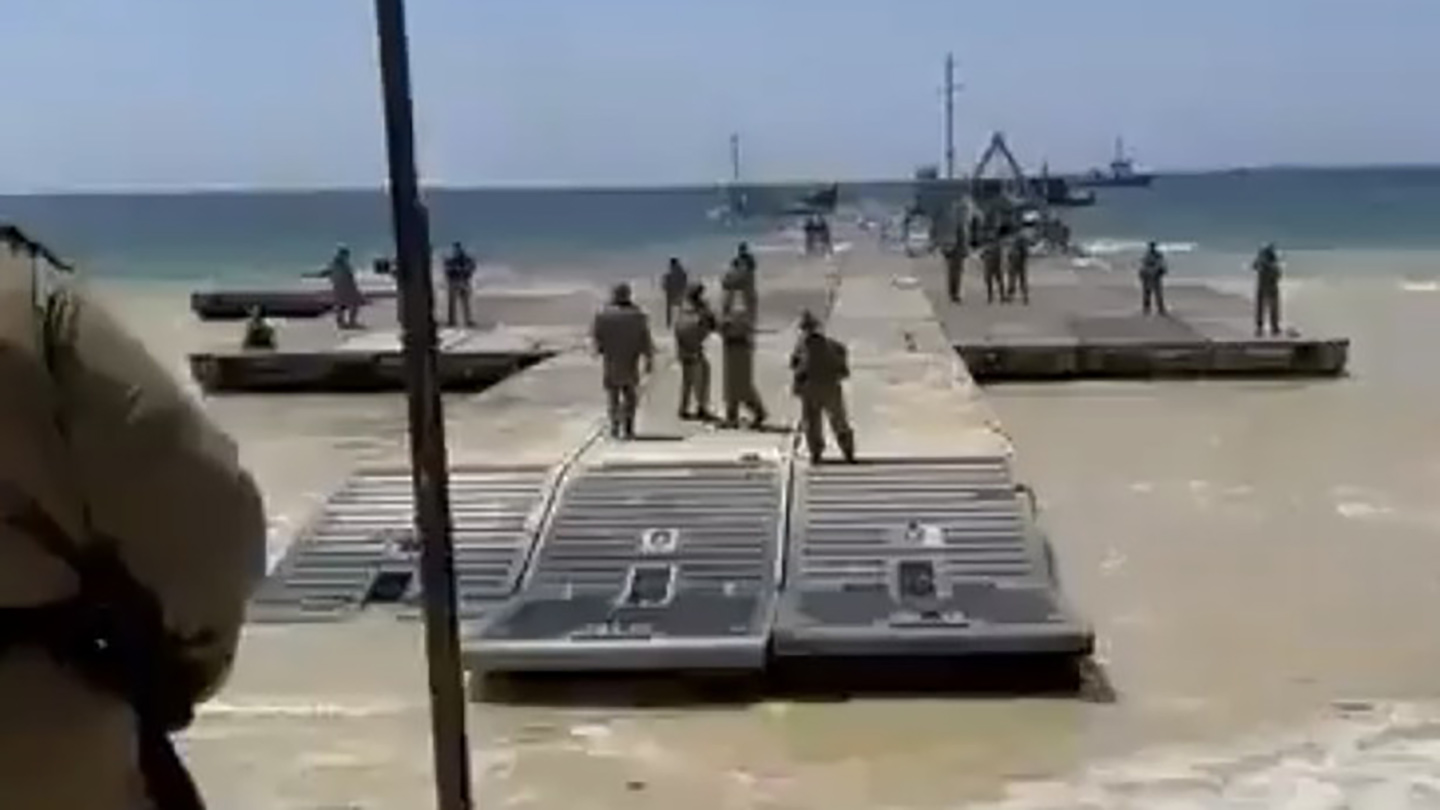The Trident humanitarian aid pier in Gaza has been re-attached and supplies will start arriving over the coming days, U.S. Central Command’s deputy commander announced Friday. The pier broke apart in heavy seas on May 28, less than two weeks after being installed.
“I’m very pleased to announce earlier this morning in Gaza, U.S. forces successfully attached the temporary pier to the Gaza beach,” Vice Adm. Brad Cooper told reporters, including from The War Zone. “Israeli Defense Force engineers provided all the necessary support to ensure the safe and placement of the pier to the beach.”
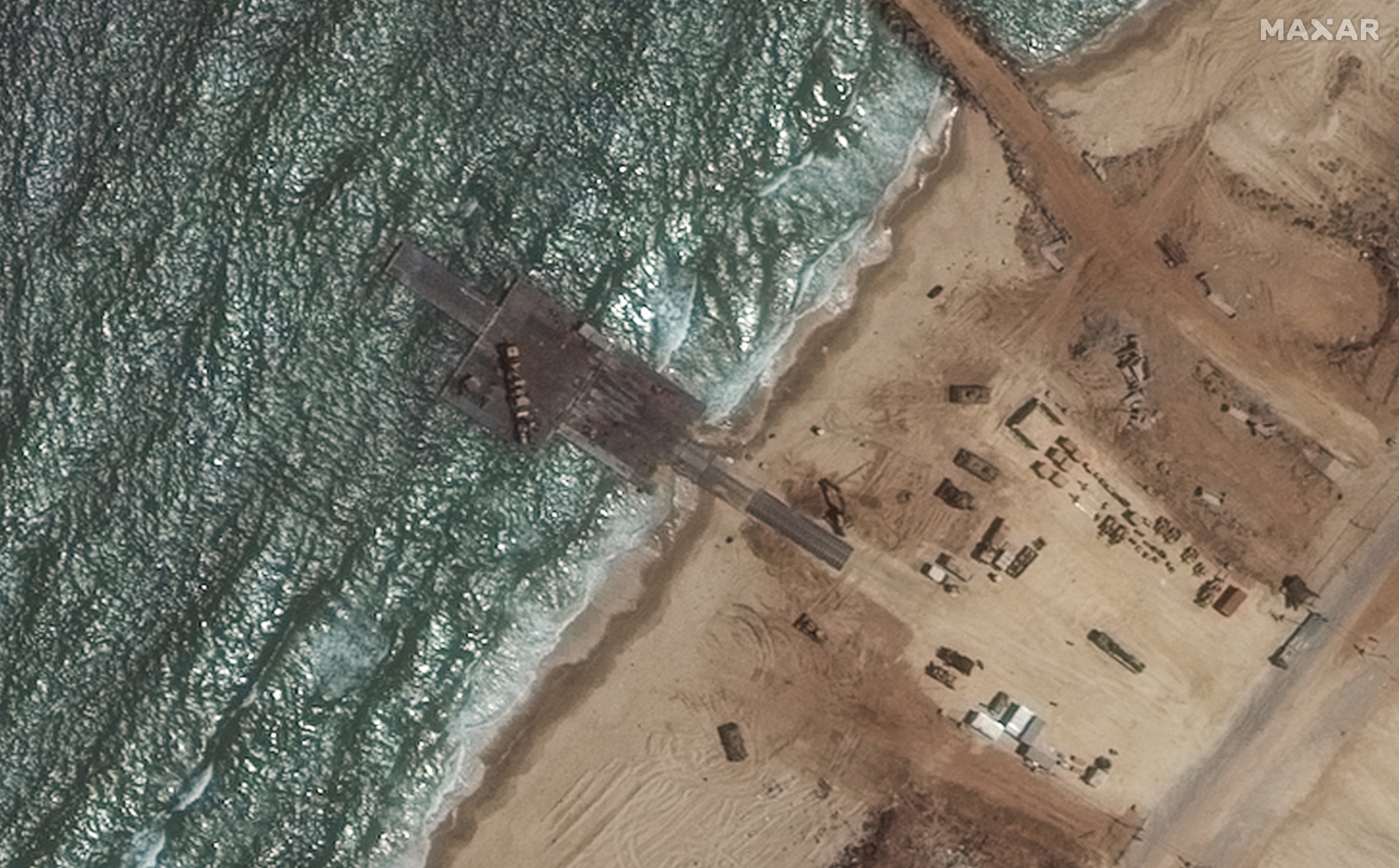
Earlier this week, the Pentagon announced that the pier, and repair costs, would total $230 million, which is lower than initial estimates of $320 million.
The policy “of no U.S. boots on the ground does remain in effect,” Cooper added. “We expect to resume delivery of humanitarian assistance from the scene in the coming days. To be sure, this method of delivering aid from the sea to the people of Gaza has already proven to be effective. During its previous week-long period of operation that temporary pier delivered 1,000 metric tons of aid – more than 2 million pounds – to the people of Gaza.”
That aid represented “the second highest volume of aid entering Gaza from any crossing during that period and accounted for about 30% of all aid delivered to the people of Gaza during that week.”
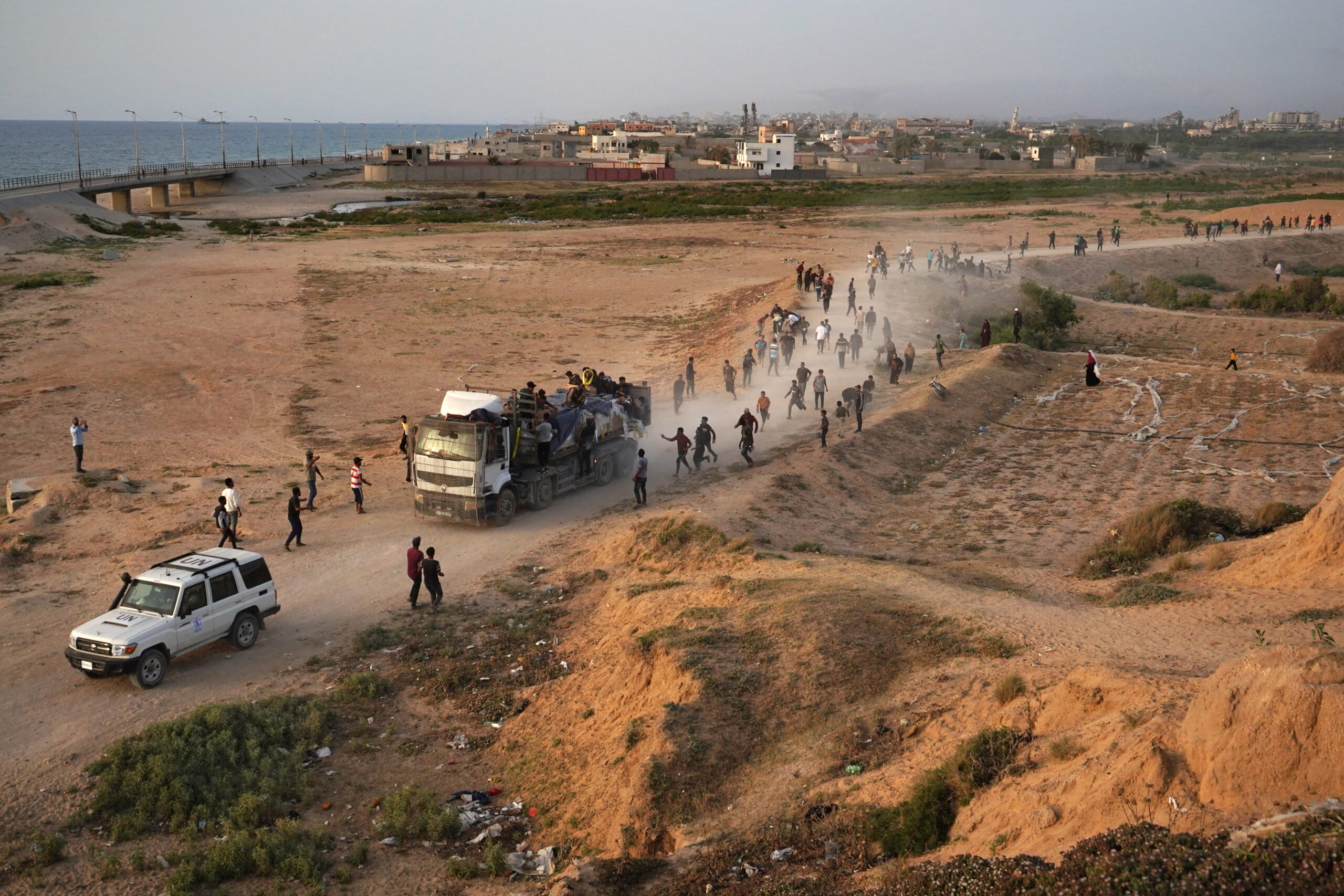
Asked what measures were taken to ensure the pier will stay in place, Cooper reiterated that weather was the main problem.
“Clearly, the issues that have appeared stem solely from unanticipated weather,” he said. “So in that regard, as we have always done, we will continue to look at the weather.”
Officials, he added, “undertook a very comprehensive analysis of linear patterns before the mission even began. In this case, we’ll continue to look very closely at this as we go forward. In the last five days of operations, we had a very successful track record of making sure that aid itself moved from the beach to the people of Gaza through the convoy management board. That process continues to build on that.”
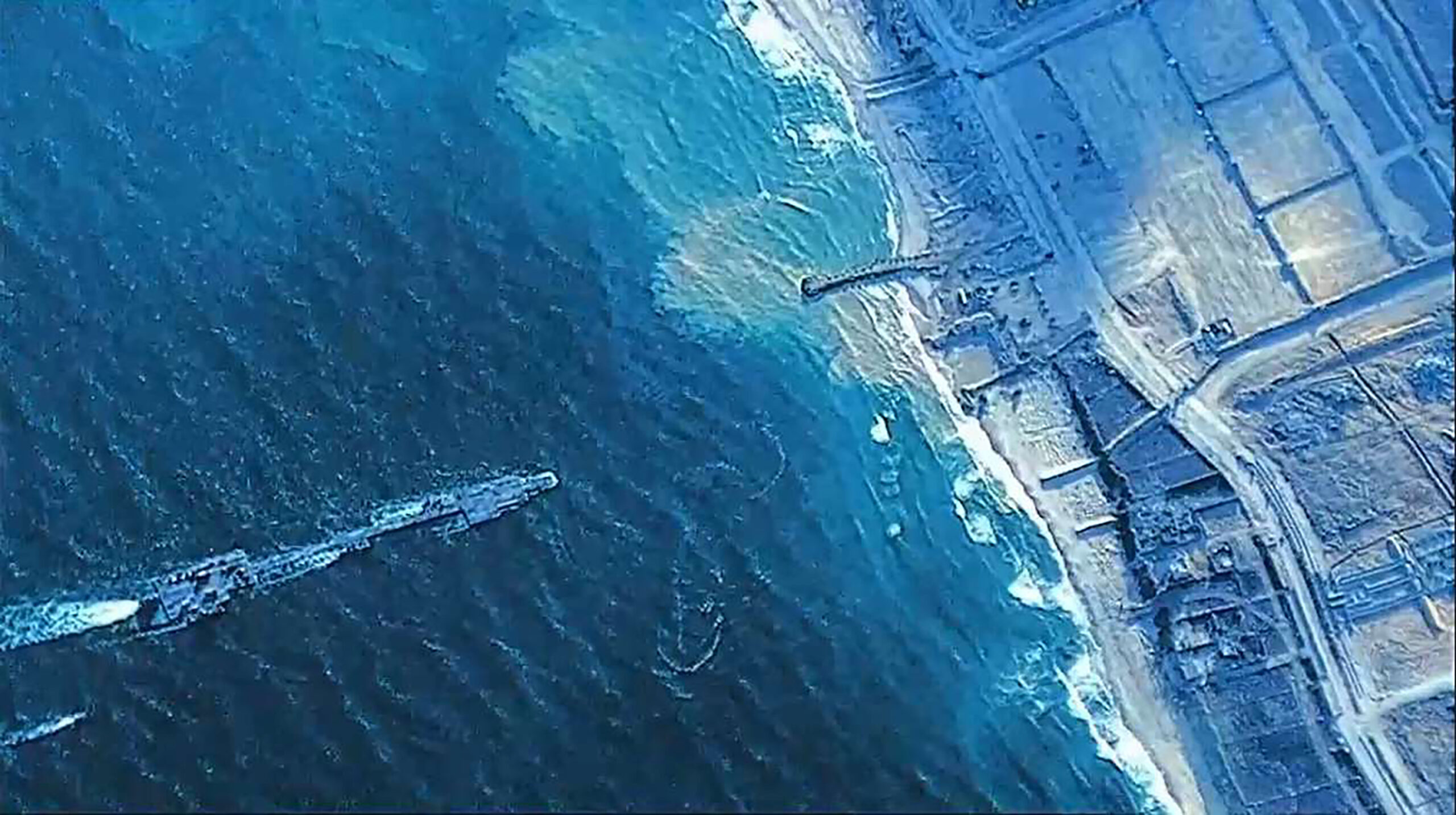
Cooper added that there are “contingency plans” in place to adjust to future weather problems, but he declined to elaborate out of security concerns.
The Israeli Defense Force engineers “were the enabling force on the beach to allow us to re-emplace the pier onto the beach this morning,” Cooper explained. “This is the same unit that we trained several months ago and how to conduct this operation. And they conducted flawlessly this morning. So we’re very grateful for their assistance.”
The U.S. military finished building the floating pier on May 16, though the basic construction work on the temporary pier was completed nearly two weeks earlier. However, poor weather delayed it being placed into its final position. Construction of the Joint Logistics Over-The-Shore (JLOTS) capability was ordered in March. JLOTS was among the things that The War Zone highlighted in our earlier story about how American forces might carry out this mission after news of it first emerged.
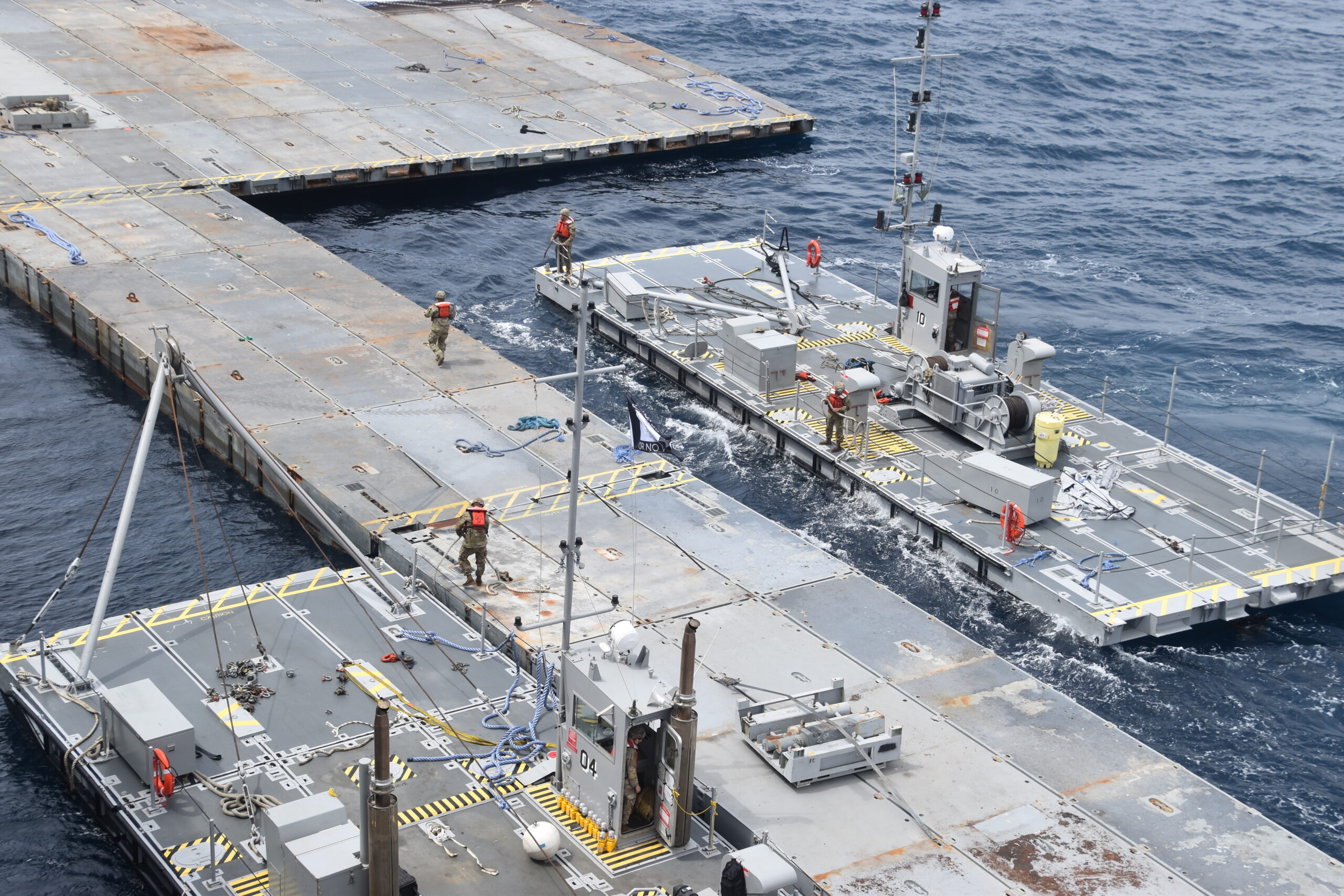
The repaired pair will create a third entry point for aid flowing into Gaza, Cooper said.
“So we want to seize this opportunity and get the aid to the people as quickly as possible,” he added. “We anticipate that our goal will be to over 500,000 pounds over the beach initially and then ramp that up soon thereafter.”
Cooper would not commit to aid flowing in as early as Saturday.
“We have definitely been dealing with a sense of urgency and coordinating with all the partners to move as quickly as possible,” he said. “So more to follow on this.”
A ship carrying thousands of tons of aid from Cyrpus is expected soon, said Cooper.
Without naming any group, Cooper warned against attacking the pier, which has been established as Israeli forces continue to pound Gaza, which has resulted in thousands killed and widespread food and medicine shortages in the wake of the Hamas invasion Oct. 7.
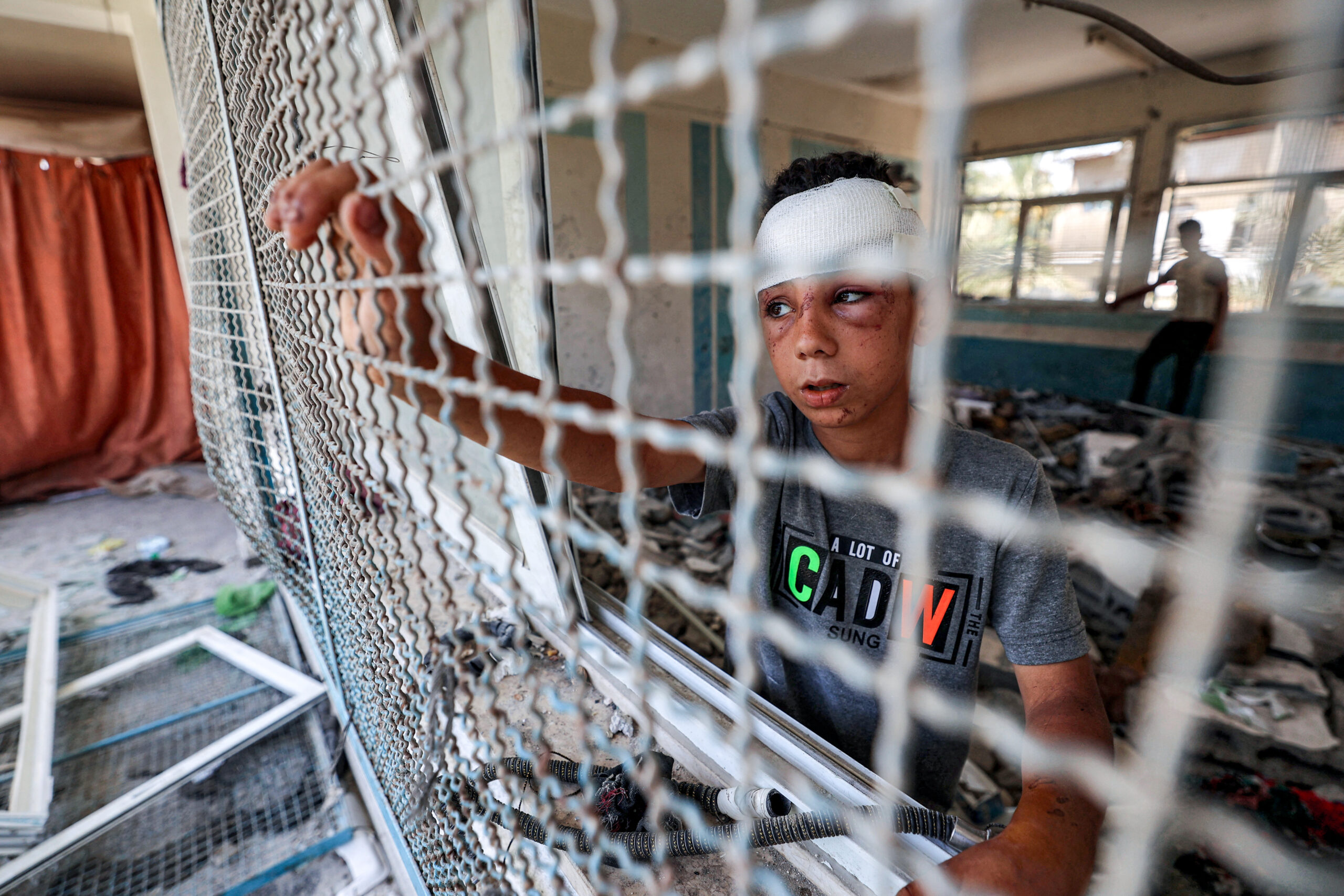
“Importantly, we remain focused on force protection as our number one priority,” he said. “U.S. and Israeli Defense Forces continue our exceptionally close coordination to ensure the safety of our people. And to reiterate, this is a 100% humanitarian mission. Any attack on those working on the pier is an attack on much-needed aid to the people of Gaza.”
Asked by The War Zone if the Counter-Rocket, Artillery, and Mortar (C-RAM) system has been reinstalled on the pier, Cooper declined to elaborate. Video of that system, along with others, was widely circulated on social media last month.
“I’m obviously not gonna get into the specifics of what force protection measures are implemented or not, other than to say we have a very comprehensive integrated force protection plan along with the Israeli Defense Force to achieve priority in the protection of our servicemembers,” he told us.
We also asked if at any point, the U.S. Navy’s Landing Craft Air Cushion (LCAC) hovercraft were considered as a viable means of delivering aid, something we raised in this story.
“We considered a whole range of options on how best to deliver aid, and the current processes that we’re using or the way that we’ve chosen,” he said. “And let me just reiterate, the model that we have right now is proven it was highly successful, it was highly impactful. Now we’re looking to take that proven model and add a little energy into it, a little higher volume, and moving forward, I think we’re in a really good position to be able to do that.”
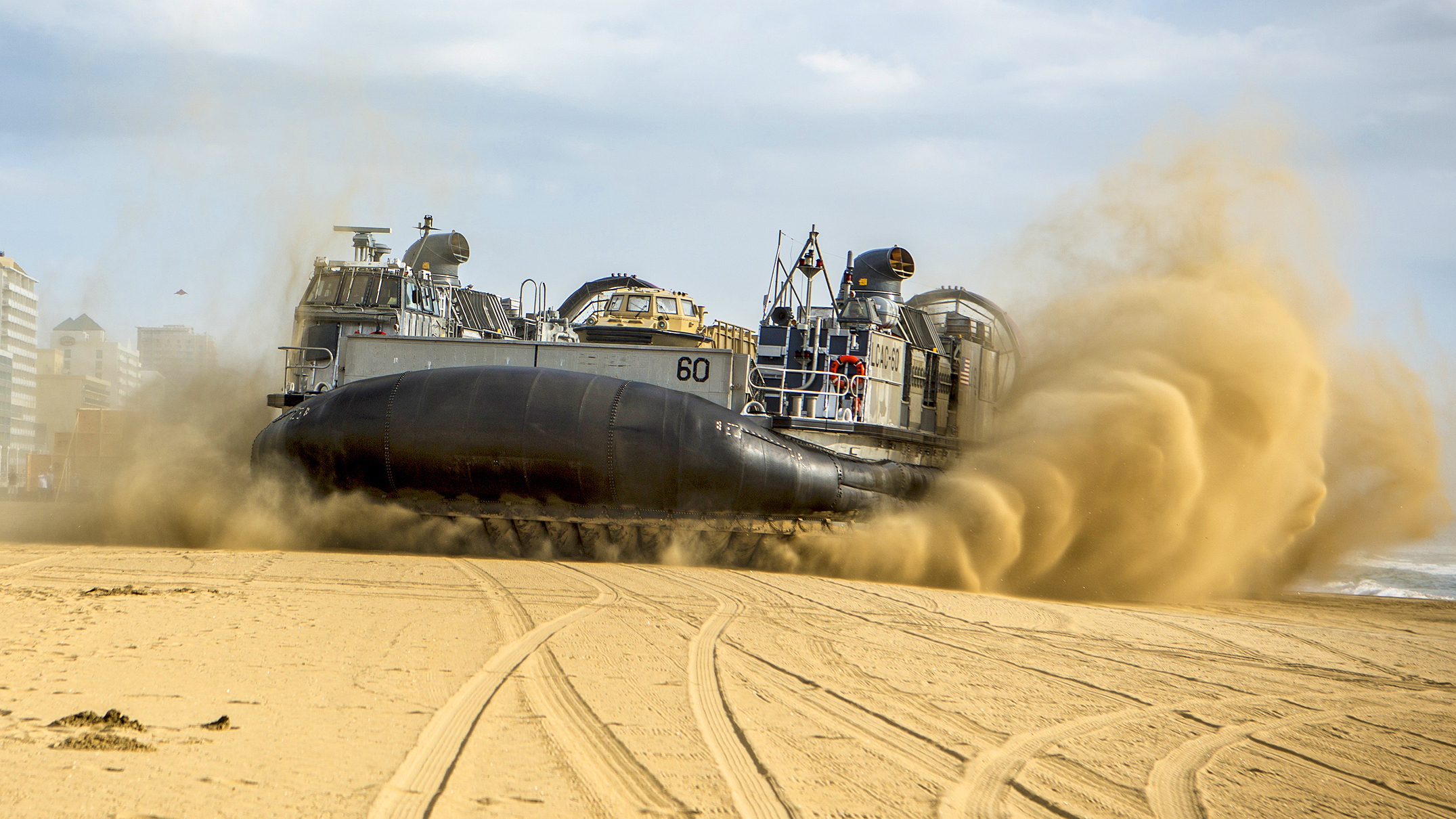
The U.S. is continuing to press Israel to open up additional land routes into Gaza beyond the two already in place, however the Netanyahu government has so far refused. While the sea route has been successful during its short time in place, weather will continue to be a factor and there is only a small window until it gets really rough in September to deliver aid on the beach.
Contact the author: howard@thewarzone.com
